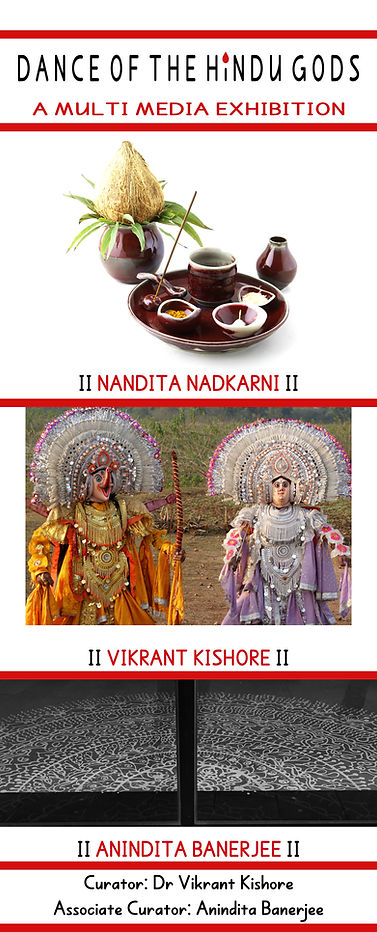
A multimedia exhibition curated by Dr Vikrant Kishore
Dance of the Hindu Gods is a multi-media exhibition curated by Dr. Vikrant Kishore; three Melbourne-based Australian-Indian artists – Anindita Banerjee, Nandita Nadkarni, and Vikrant Kishore have collaborated for this project. The exhibition was hosted at the Queen’s Hall in the Parliament of Victoria from the 29th of August to the 2nd of Sep 2016.
The Consul General of India Ms. Manika Jain launched the multimedia exhibition on 29th August at the Parliament. Craig Ondarchie MP and Dr Adrian Danks (RMIT) were the guests of honor during the launch.
Meet The Team
‘Dance of the Hindu Gods’ is a multi-media art exhibition on the metaphysical association of the Hindu Gods with traditional Indian dance, music, song, and art forms. The exhibition focuses on the cultural association of the Hindu Gods with art forms through the interpretation of the three artists: Dr. Vikrant Kishore - a filmmaker, Anindita Banerjee - a visual artist, and Nandita Nadkarni, a ceramic artist. The aim is to provide a glimpse of how art forms in Hinduism extend beyond religion, despite being endorsed by Gods; as creators of certain art forms, or as practitioners. The Gods become a symbolic representation to celebrate and disseminate art and art forms. This exhibition will showcase how these Australia-based artists blend the traditional and tribal art forms of India with modern interpretation through their creative work and understanding beyond religious practices.
Due to the vastness of the capacity of this topic, we restricted our selection to CHHAU, a ritualistic dance drama from Purulia in West Bengal, India, to be our medium of investigation and analysis. Keeping in line with the ceremonial practices in relation to Chhau, this exhibition has been structured on the ritualistic traditions of the performance. The artists take turns to respond to the six different steps (or rituals) that a typical Chhau performance goes through - the Dhumal Bajna and Daharua (prayer offered to the gods, costumes, musical instruments and masks), Akhara Bandana (veneration of the arena), Sabha Bandana (audience worship), Udan Bhajana (musical invocation) and Ganesh Bandana (worship of Lord Ganesha).
The exhibition showcases how traditionally art is often perceived to be a worship of the divine. Rituals such as the worship of the musical instruments and costumes as Gods, or the worship of the performance arena as a sacred place, or finally bowing in front of the audience and treating them as Gods, is all a manifestation of the deeper meaning of the appreciation of Art and elevating it to a higher platform.
The “Dance of the Hindu Gods” is not a gathering of artists on the basis of religion neither they intend to exploit religion at any level. It instead is a quest to unearth the roots of traditional art forms and its context and relevance in the contemporary world. The foundations of this is deep rooted and intertwined with traditional and cultural bindings and meanings, which run the risk of getting impaired in a diaspora.
The project is contextually structured not only on the need establish our identity in a diaspora but to also share the pride of a rich cultural heritage. The focus is to attract interest to the Hindu philosophical association of Gods and Art, which we think is a significant aspect of our cultural inheritance that we would like to showcase with pride in the contemporary world. This certainly should not be confused with religious teaching. The protection and sustainability of the ‘intangible cultural heritage’ (UNESCO) has been a key discussion across the world; taking a cue from the migration of people around the globe and attempting to cling on to their culture, we focus on our Australian circumstances to reflect on our roots and culture through this multi-media exhibition Dance of the Hindu Gods.
You can follow the movements of the artists and the excitement behind the scenes at https://www.facebook.com/danceofthehindugods/.
















